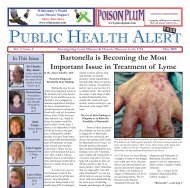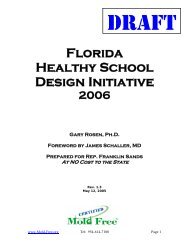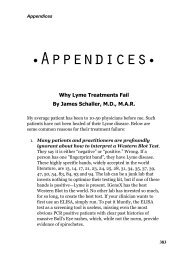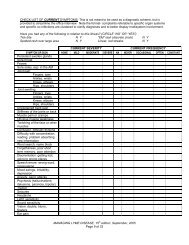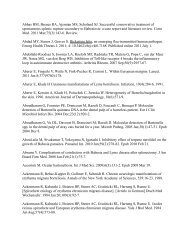Download Here - James L. Schaller, M.D., M.A.R., P.C
Download Here - James L. Schaller, M.D., M.A.R., P.C
Download Here - James L. Schaller, M.D., M.A.R., P.C
You also want an ePaper? Increase the reach of your titles
YUMPU automatically turns print PDFs into web optimized ePapers that Google loves.
Environmentally Friendly Mold Remediation Techniques That Significantly Reduce Childhood Asthmamites, toxin- and/or odor-producing bacteria, viruses, and insects.None of these are tested by standard mold clearance procedures thatare based on air sampling for mold spores. However, proper cleaningof the mold-related particulates will automatically rid theenvironment of these other contaminants.Army Research Says Mold Contaminated Contents May Be Cleaned– Discarding is Not Necessary.Mycotoxin-laden spores, fragments, and dusts are easily aerosolizedwith the slightest breeze. Simply opening a door, walking through abuilding, or turning on the A/C can jostle these particles loose. These“mycotoxin carriers” will always spread out from the moldcontaminatedarea and land on furniture, fabrics, carpeting, and otherexposed surfaces throughout the entire building.o However, clothes with settled contaminants can effectively becleaned by laundering with hot water and detergent.o Carpets and furniture with settled contaminants can effectively becleaned by steam cleaning.o But carpets, clothes, or furniture with actual mold growth shouldbe discarded.US Army Mold Investigation Decision Logic Notes: 91. Roughly approximate the total surface area of visible mold.Categorization of the remediation levels are sometimes borderline,so when trying to decide the category to apply, consider the extentof visible growth, such as a heavy blanket of growth on thesurface, to barely visible. If heavy growth is apparent, considermoving up to the next level of protection.2. Do not skip this step. Address the source of water or moistureproblem or the mold will simply reappear.3. Always protect the health and safety of the building occupantsand remediators.4. Mold may be hiding on the backside of drywall, vinyl wallpaper,or paneling, the top of ceiling tiles, the underside of carpets and38





